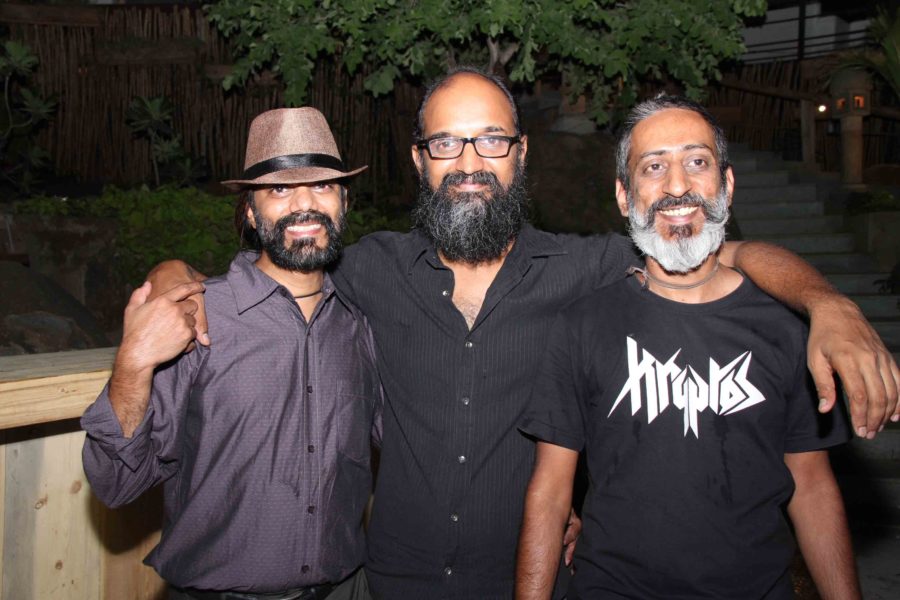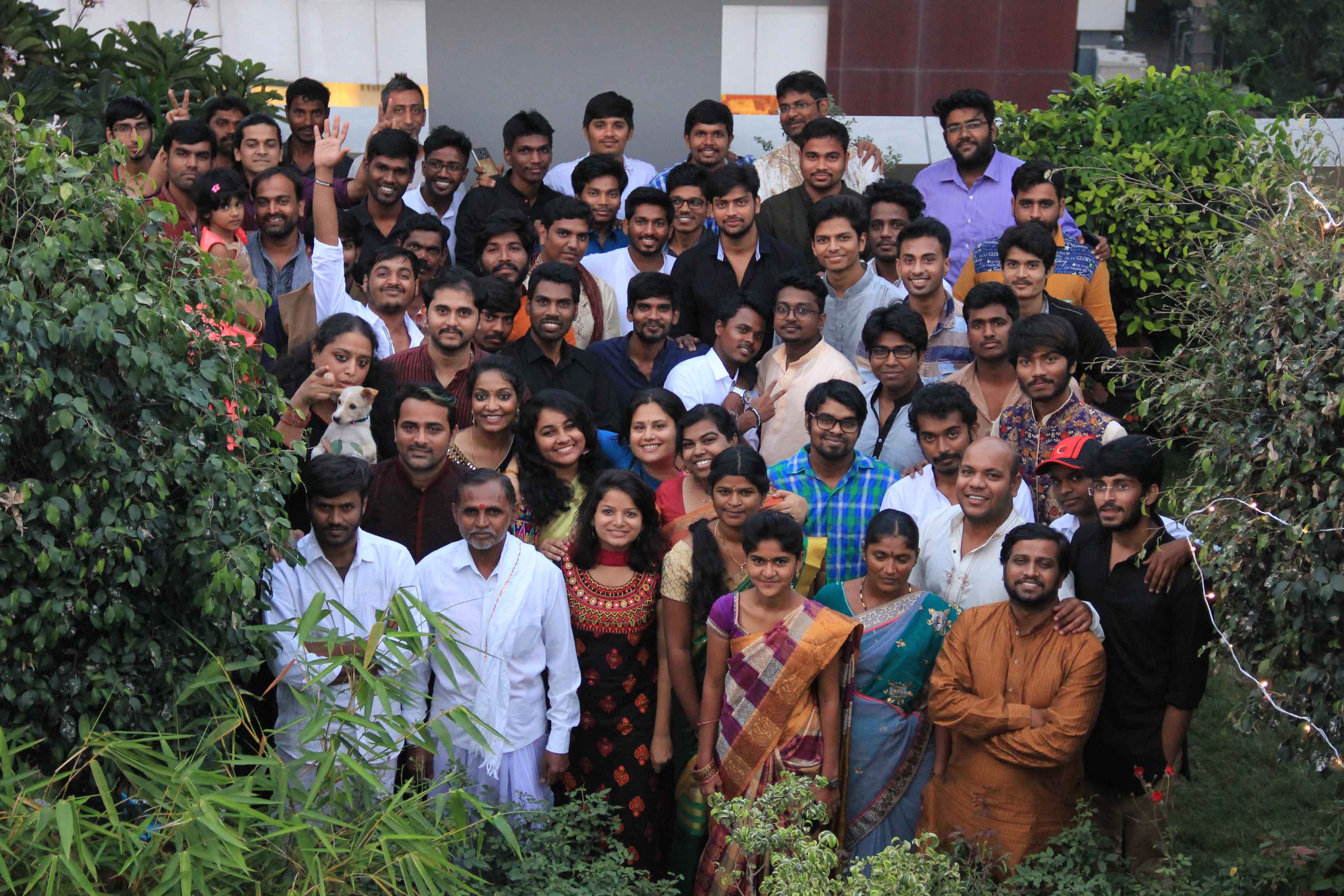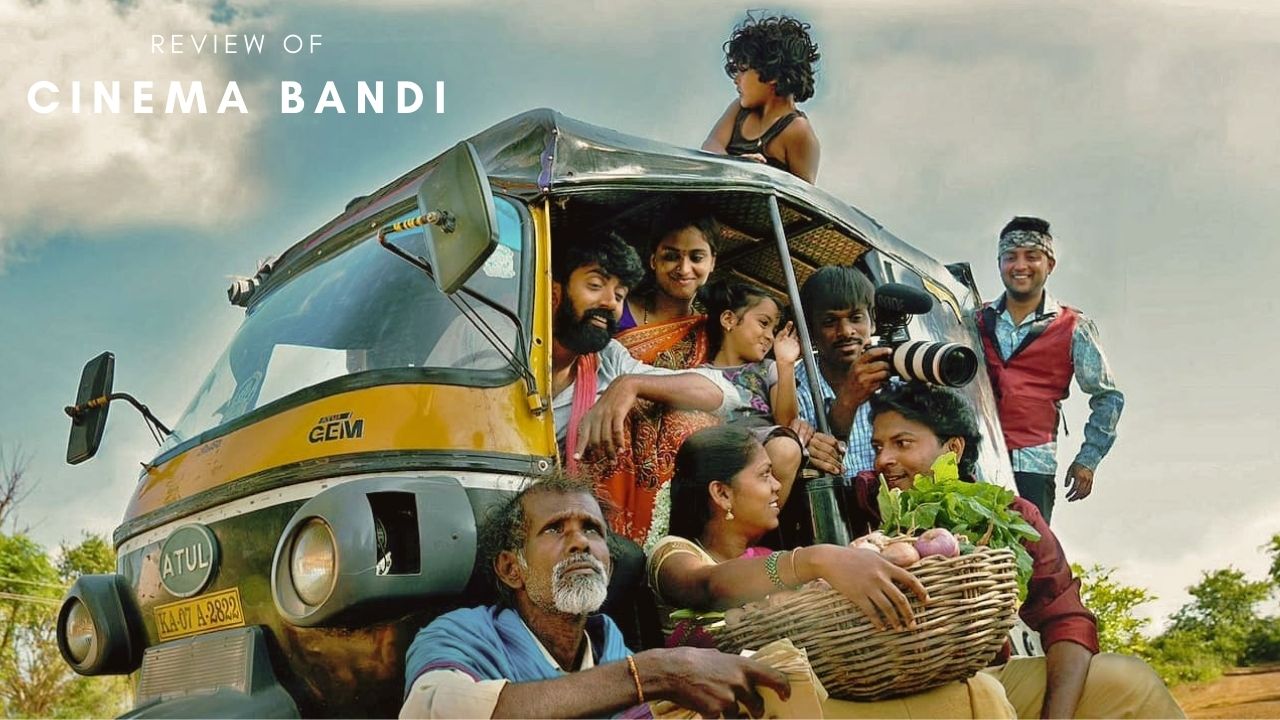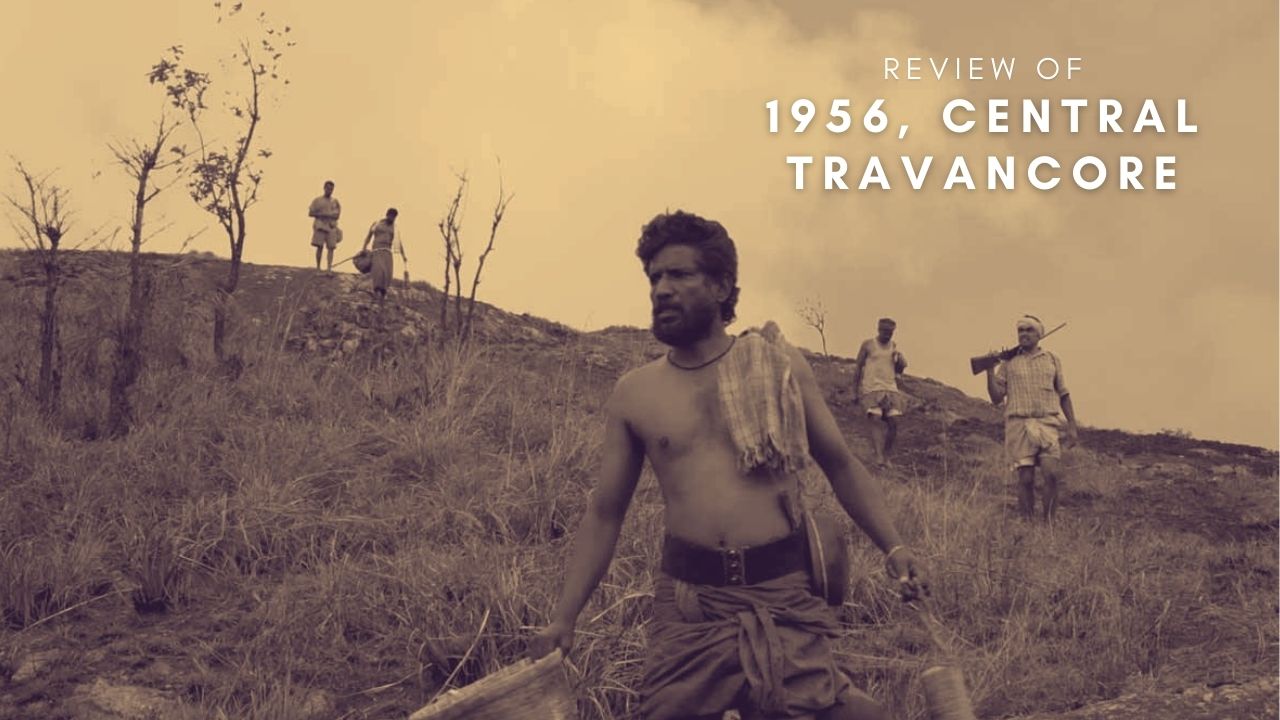
The Story Of Dreams Brought To Screens – FireFly Studio
A movie is usually described as an art piece that is an amalgamation of 24 crafts. While most of us are aware of this, what we might have failed to notice is that there is one department which still struggles to find an identity in this definition. That’s Visual Effects! The process of using computer-generated imagery to create visuals that are practically impossible. There itself one can call it, MAGIC!
In a way, Telugu cinema has been a pioneer in using visual effects. With movies such as Mayabazaar and Pathala Bhairavi, legendary makers such as KV Reddy cast captivating visual spells with their cinematic brilliance. And mind you, this was in the 1950s. In the next six decades, makers along with brilliant visual effects creators have widened the boundaries of experiencing visually splendid storytelling. And one such creative company that has not just been one of the pioneers in coming up with a creative studio, but have also survived through the thick and thins in the industry is FireFly Creative Studio.
The Inception Of An Idea And The Eventual Fruition Of a Dream
Started in the year 2002, the company is an outcome of a passionate challenge which 5 creators threw at themselves. When there was little or no awareness of how to use digital visual effects in Indian movies, these people saw an opportunity to create the market. Phani, Sanath, and Nagesh are the brains behind the studio that has treated us with movies such as Baahubali, Robot etc. In 15 years, the studio has won 5 Nandi Awards and a National Award (for the film Anji) for their brilliant work. We at Voxspace approached them to find out more about their profession.
I met Phani and Sanath who were amidst their work and reviews, but sat down patiently over a couple of green teas for an informal chat. I was completely fancied by their uber-cool studio space with over 60 people working passionately on their stuff. Phani told me that they designed the studio themselves, including the workstations, lighting and garden. Plus, they don’t have intercoms for people, hence the noise. He said they prefer that their team interacts face to face, so that the nuances of communication are not lost. That’s how you facilitate richer discussions, leading to better outcomes. Now, for a field that involves immense creativity, how important is that?
In addition to seeming quite glamorous on the outset, there is a lot more to these creators who are exceptional talent without a doubt, and also have a voice that needs to be heard. Hence, here are my talks with Phani Eggone and Sanath PC

Firstly, hearty congrats on winning another Nandi Award for Soggade Chinni Nayana. Might be a great moment for you and your boys.
Thanks a lot! This is our 5th Nandi. We’re especially happy for this one, as it is the first Nandi led by the next generation of artists at Firefly, which means things are moving in the right direction for us. Vinod, the Visual Effects Supervisor for Soggade Chinni Nayana has been with us for over 8 years now. For someone who was inspired into this field by the film Anji, he has come a long way. We are proud of him!
So, as a layman, I’d like to ask, is there any definite time frame that you could estimate before taking up a project?
For any project, a Visual Effects Supervisor can be certain only up to 70-80 % of the time. It completely depends on what the director is expecting and the level of detailing that goes into it. For example, it took us around one-and-a-quarter years to put around 5 minutes of the tiger in Pulimurugan on screen. Just to build the tiger’s model itself (without animation) took us 4-5 months. On the other hand, there are entire projects which we could finish in 4-5 months. So timeframes fundamentally ought to vary on account of the complexity of the visual effects.
However, additional (non-visual effects) complexity is brought about because a client is in a hurry, or uninformed of visual effects processes, or another studio may have submitted an underestimated schedule or an undercut budget. Such projects could overflow as schedules & budgets will invariably begin to stretch on the go. Typically, we try to gauge up front whether visual effects are integral to the film and whether a client is talking to us because they care about quality, and whether we can contribute to the film from the pre-production phase itself. We try to sign on to only such projects and tend to keep away from projects which have other goals. This way, though we have earned a good name for our work in the industry, we are also regarded as not so pliable.
At one-point Telugu industry was the pioneers in visual effects with movies such as Mayabazaar and Pathala Bhairavi. And then we went back into social dramas. Again, with movies like Ammoru and Devi, visual effects re-surfaced with a better technology. Now after a gap, we see movies like Anaganaga Oka Dheerudu, Magadheera, Baahubali, Robo etc have upped the game. So how do you see the future of VFX rich films in India?
As long as our country is diverse and multi-cultural, we think there will be an audience for larger-than-life & fantasy driven films. And these will only get richer and richer. Except that back in those days, visual effects were accomplished in-camera and other analog methods, but now the tools are digital.
Coming to your projects, which is the toughest project and most satisfying project you guys worked till now and why?
Frankly, to say, not much satisfaction has happened in the recent times.
What? Not even Baahu…
Yes, not even Baahubali. In fact, Baahubali has been one of the more disappointing projects for us. And this is a cliché, but satisfaction will never happen because there is always something additional we want to contribute but we cannot, due to various constraints (mostly of the non-visual effects variety!)
Two kinds of experiences keep occurring to us. One kind is where we create visual effects which we are proud of – perhaps we achieved a creative or technical breakthrough – but the film doesn’t work. So the film vanishes from memory & so do the visual effects. The other kind is when we think we delivered an okay output, but the film turns out to be a huge hit. Accolades start pouring in, may be awards too. Since these successful films reach out to many people and the film is successful, the visual effects too are branded as great. So we have situations in which even filmmakers are judging visual effects not on their own merit, but rather by the overall success of the film.
Also, How much is the percentage of filmmakers who actually consider your inputs? If so, to what extent are these inputs given from your side?
Sanath: As creative people, this urge to view or present things differently comes to us quite naturally. So, on the films that we sign up, we contribute significantly. We persuade filmmakers to elaborate on the storytelling and allow us to add as much value as we can. Many times, when we see that a movie has a bigger potential, we try to push the filmmakers towards it.
Phani: Let me put it this way, there are more ideas of ours on screen than what we have been credited for. Especially in instances where we think our contributions turned fortunes for big blockbusters. In Baahubali for instance, we know how much we contributed to the visual design of the film, that we even planted the very idea & processes of character design & world design, that could be the basis of the film to become a franchise… Now how much the industry or the audience associates this aspect of the film with Firefly, is debatable. Sometimes we don’t know whether to be sad or satisfied with it and go through a roller coaster of emotions. It’s not like we like to keep fighting for it. But if we look at our ideas in terms of whether they made an impact, then yes, we have a lot to be proud of.
So, ever since the inception of Firefly, how would you measure the amount of satisfaction seeing your idea grow in these 15 years.
Overall I’d say that the sense of satisfaction has been steadily going down, although the volume & profile of projects keeps going up always. Actually, we started up by making our own independent content – a nice pilot for an animated series. But somehow it never got picked up, maybe because it was too early or we were too naive. From the ruins of this short-lived venture, we transitioned into visual effects. Initially, obviously because we were smaller, we could focus on the creative & technical aspects of work, which we definitely enjoyed more. Eventually, we started doing bigger projects, where the nature of satisfaction is somewhat different. It’s like, we were able to surprise ourselves that we could consistently run a team of 100-odd people, in two shifts and all. But, creatively and technically, as long as we do projects, I think there will be always a sense of dissatisfaction because all said & done, we are supplementing someone else’s ideas.
So, just a curious thing to ask here. Why the word ‘Firefly’? Any symbolic reference?
We liked ‘Firefly’ as a name and for the creature it is. It glows by itself without anyone’s help. That’s how we like to see ourselves. None of the founders are from the industry, and no godfathers, and no investors.
True! You guys are being one definitely….
Sanath: I’d like to add another thing here. As a profession, VFX has not been really integrated by the film industry as one of the 24 crafts. This is sad. We are considered as outsiders and when we step in, we have to either step into the shoes of the art director, or the cameraman to instruct him on the shots we require. And in filmmaking, every department is strict and particular with their own work. They never take a chance to poke into another department. And when we come in, everyone sits up questioning us as to who we are to direct or instruct them on their work. It’s only of late that a few care to give our profession some respect.
So, how do you think the style of work in our cinema differs from that of Hollywood?
Sanath: It’s quite complicated. There, before the work even takes off and comes to the visual effects team, it goes through multiple revisions and they are highly professional when it comes to executing it. Also, I perceive this as an art like any other artist who betters his act with every shot.
Phani: There is a tendency here to perceive films or filmmaking from Hollywood as superior. But I wouldn’t call our films or filmmaking as less or more evolved. It is merely very similar to how our society functions – say, the way we conduct ourselves on roads or approach work. In the west, people, in general, tend to be more organized, punctual, stick to deadlines etc. So naturally, that’s how they make their films as well. Here we are more free-flowing in our approach, so our style of making films itself is different.
While it’s entertaining and informative to compare and analyze these two entirely different idioms, I feel odd when these translate into a sense of inferiority or superiority. For instance, there is this tendency to taunt song & dance in our films, just because they don’t fit into the Hollywood formula of what a film should be. But why should we accept that idiom as the universal standard? What if we said that it is this very song & dance that makes even our worst films contain more artistic expression – in the form of poetry (lyrics), music & dance – than theirs? Even our acting craft is quite different from theirs. Not because human emotions are very different, but the rhythm and sound of our languages – which has a subtle & major influence on performance – are so different from theirs.
I find it bizarre that we turn these natural & beautiful differences into inferior-superior judgements, usually at our own expense. We are so much better off embracing ourselves and our cinema for what it is. Instead of trying to imitate Hollywood’s form & content, I prefer that we learn from what they are really good at which is branding, marketing, selling. They are very clear that whatever film it is that you make, there will be takers for it, somewhere in the world. So you have all these brands – A films, B films, zombie films, slasher films, straight-to-DVD films etc – neatly making their way to takers around the world, through multiple channels. I would love to see Indian films getting global distribution too because they deserve it.

Fair enough! So, what are your comments on giving world-class outputs?
Right! When the audience judges you on ‘world-class’ parameters, they have every right to do so. I have no qualms with that. But, my questions are to industry insiders who casually demand ‘world-class’ visual effects, with very little to match from their end. Is your writing or costumes or art direction or cinematography or direction, or say, even basic make-up ‘world-class’? Then why demand it from only visual effects? Can you appreciate that the quality of our work has to match the quality of the rest of the visual? What happens if the rest of the visual is of poor quality? These are obviously all interrelated, so the onus is really on the director to get all these pieces working together in the final movie. I mean, understanding how to get great visuals on screen is a big part of the director’s job, as much as it is the producer’s job to get it facilitated.
Are there different ways for a producer to approach visual effects?
So far, there are three approaches. The first one is to assign the entire visual effects of a movie to one studio and hold them accountable to delivery. Whether the studio will do it all themselves or sub-contract to other entities is up to the studio. The second way is that the filmmakers themselves divide the work between a few studios, and coordinate it all themselves. The third way is that the filmmakers hire a freelance visual effects supervisor to get it done. S/he, in turn, would approach various studios. We prefer the first approach obviously, not just because we are a studio, but fundamentally, the visual effects delivery gets substantially de-risked. The third approach is also quite prevalent, but we find it riskier than the first. The second approach, though prevalent is relatively the rarest amongst the three.
So, has Firefly hit any low in lifespan so far?
We’ve gone bankrupt quite a few times so far! And not due to any dearth of work too, right from the time we started. Let’s just say that we keep getting defrauded with great creativity! Since we are entirely self-reliant, as & when our monies get defaulted, it takes us, say 6 months to 2 years to recover. These phases always feel tremendously slow & persistently painful, because our life choices, our integrity, our fitness to even survive… all these get ruthlessly questioned by anyone & everyone we deal with.t.
Tell us about the business and financial side of VFX industry.
It’s quite bad. Not just in India, but all over the world, it’s the same fate. In terms of value, digital visual effects is about doing something that cannot be done physically. On paper, this looks highly valuable, a proposition that people – especially filmmakers – would pay through their nose for. But the mystery & tragedy is that visual effects studios and artists have driven themselves into a “I-will-prove-I-can-do-it” trap, instead of a “Only-I-can-do-this” value proposition. The origins of this trap are in the early phases of visual effects evolution, during which visual effects teams had to basically develop their own software & hardware to create even simple digital shots, which we today consider primitive. But since filmmakers couldn’t really trust the outcomes of digital effects development, visual effects teams were basically forced to shortsell their work, just so that it could appear on screen. In my understanding, this is what has grown into a full-blown culture of underselling in visual effects. Of course, it all got amplified by the speed at which computer technologies evolved, such that, by the time digital effects shots could be relied on consistently, the cost of computing had dropped dramatically enough for more & more studios to compete with each other and never let a sustainable pricing to stabilize.
In short, today, all over the world, visual effects is more of a passion-driven industry. In India, apart from the fundamental pricing itself being problematic, there is this additional rampant culture of non-payment. Producers’ instinct seems to be that they are doing us a favour by allowing us an opportunity to work on their film. Fair enough as a negotiating tactic. But even after signing up, the impunity with they try to default, is really something to be experienced as a life lesson!
Could you tell us what drove ‘Firefly’ to come this far?
Our work is good enough to be on the big screen. It might seem silly, but that’s basically it. Not everyone’s work looks good on the big screen but we are good at it. We seem to approach visual effects differently from how it is ‘normally’ done. We prefer to pick projects in their pre-production stages and get into the shoes of the filmmaker. We understand film grammar and the entire process of filmmaking. Even as we are building visual effects, we ensure that storytelling is happening throughout.
Another factor could be that we started off in the industry as complete outsiders. When there was no market as such for visual effects in India, we saw to it that we played a big part in creating that market. If not for this sort of a mindset, we may not have made it even this far.
Yet another aspect of how we are as people is that we can digest negativity and move on. For instance, even though we did all the visual effects in Anji, we were paid only for a few of our expenses. Secondly, even the perception that visual effects were done in London, was allowed to persist even after the film’s release. So, all the wild appreciation for the visual effects had no mention of us. It was only a year later, when we won the National Award that people even got to know that we existed. When the film flopped, we had every reason to wind up Firefly, but we persisted. That’s the point.
What do you ensure to keep your organization and staff always in high spirits?
Our approach to visual effects is quite unorthodox and mostly counter-intuitive. For instance, most studios institute what is called a ‘pipeline’. But we never cared for it, relying instead on people’s inventiveness. As a result, the really creative & inventive people thrive here, setting off a ripple effect that’s generally inspiring to people.
Another premise for us is that if you took a group picture of everyone at Firefly, one shouldn’t be able to tell apart the founders & seniors from others. We don’t have a concrete hierarchy in the organization, but instead create temporary project-based hierarchies. So, typically, we allow everyone to pitch for leading a project as a Supervisor, as long as s/he can demonstrate the ability & intensity to do so. Hence, even as a founder, I could be taking on a smaller role in a project and reporting to a Supervisor less experienced than me. Though this creates confusion to an outsider regarding who’s who at Firefly, the important thing is that it creates a sense of possibility amongst the truly motivated people & filters out those who are relatively inert.
We are also ok with a certain level of conflict or tension between people to play out in the open. When flare ups do happen, because it’s in the open, there’s always someone who brings in a bit of humor into the situation and it gets sorted out quite nicely, quite quickly. An interesting outcome of all these is that the usual blame games & inter-department politics are at very low levels.

For people who want to pursue a career in VFX, what are the words of advice you want to give them?
In whichever profession you choose to be, and particularly in visual effects, on Day One at work, you had better be clear that you want to be at the top of that field. If your career vision is only limited to what you can do right now, your career will surely stagnate.
Beware of a false sense of competence. Visual effects industry is full of people who work on repetitive, sub-contracted tasks, but on big-name Hollywood movies. With due respect, most of these chaps have an exaggerated sense of competence on account of this. The question I would ask them to consider is: ten years on, would you rather be doing non-descript work in a Hollywood movie, or, become a visual effects supervisor, say, for a Telugu movie? Obviously, it’s your life, your career, there’s no disrespect either way, but I’d say, be clear.
Visual effects is still passion-driven, so the top guns in the industry are really good at what they do. It’s almost impossible to sustain as a visual effects supervisor just by sucking up and playing politics. Your work is out there in the public realm, so if you’re not really good at your work, you’ll not only get found out but perhaps humiliated too. Understand this clearly, and respect the chaps who’ve made it.
Therefore, stop with your ‘Boss is a bullshitter’ jokes. Don’t you want to grow up to be a boss yourself? If you have such contempt for a boss, how can you see yourself in such a role in the future? Hopefully, you do realize that it’s a self-fulfilling prophecy.
And finally, yes, visual effects is science, it’s technique, it’s technology, it’s processes, it’s team play, it’s management. All this is true. But at the very core, visual effects is art. Which means, it’s about possibilities, vision, novelty, an inspiration for the public. It’s hard to trust this, but if you learn to hear, amplify, hone and use those whispers in your head, however oddball others may find them, that’s what eventually makes you an artist. But at the same time, beware of a false sense of competence. That’s the balancing trick.
The way this trick works is in clearly understanding that visual effects is essentially an artistic pursuit but on a team scale. So if you’re fiercely solo, your body of work will be limited and you will not get to do any large-scale work. On the other hand, if you keep hiding behind your team, the novelty in your work will rapidly disappear, which defeats the entire purpose of being an artist. So, do develop your own mental flexibility to switch between these modes at will. Both are required in different phases of visual effects projects.
Finally, patience. If you’re reading this far down, not bad! Thank you for your attention and may your inner light burn bright!














